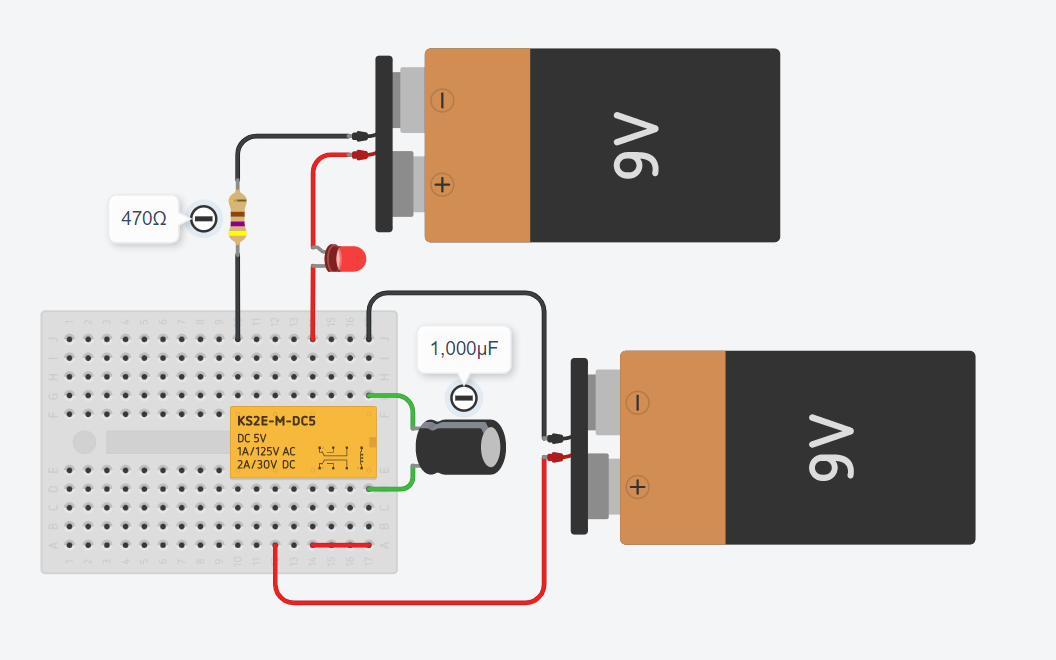I'm trying to make a blinking LED.
This circuit connects the two ends of a 9VDC battery through a DPDT relay. This turns on the switch which breaks the connection. When the connection breaks, it is turned on again, and the process repeats indefinitely.
I added a capacitor to slow down the oscillation, but my LED seems to be permanently on. What can I do to have it blink instead?
Link to Tinkercad of this circuit
Below is the auto-generated schematic. It's a bit messy and I'll try to clean it up if required, but I'm a complete beginner and it might take some time. :)




